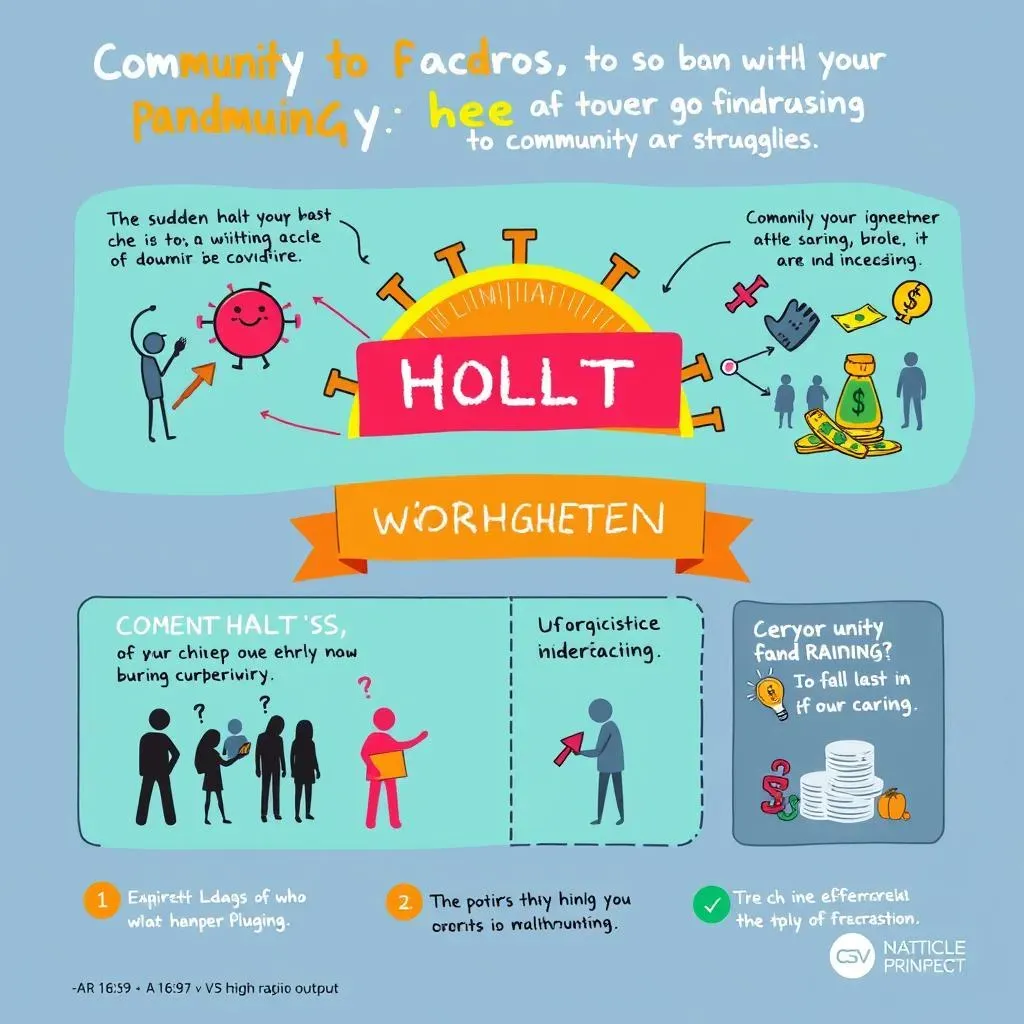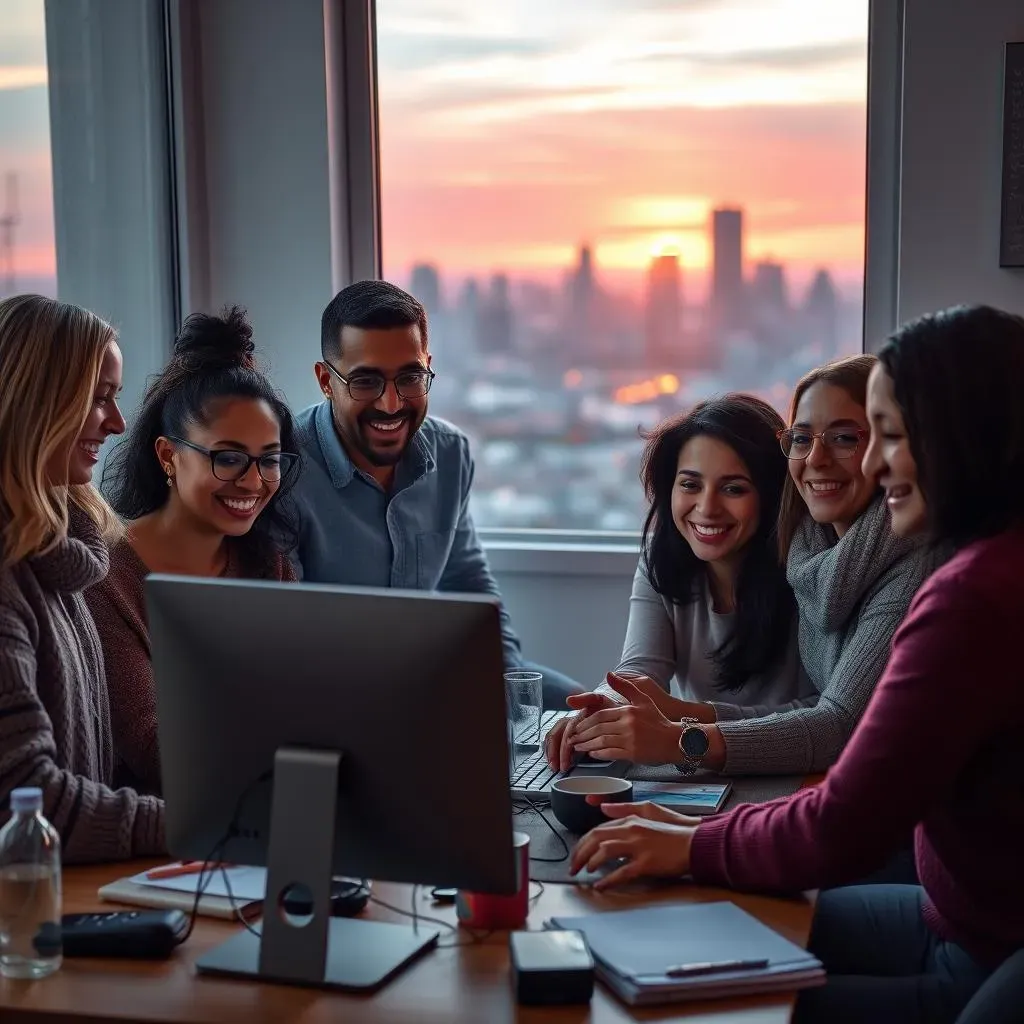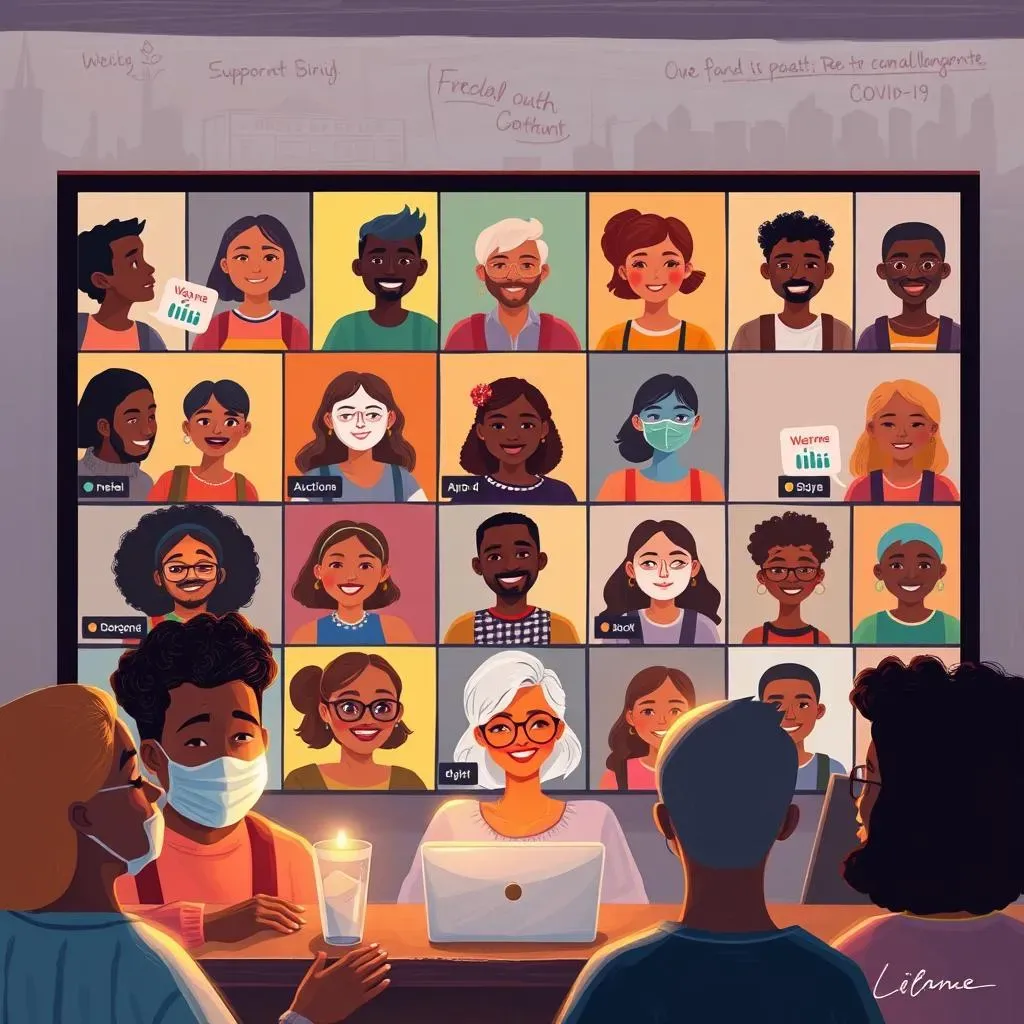Table of Contents
Remember when the world seemed to stop? When handshakes turned into awkward waves, and gatherings became a distant memory? That was the peak of COVID-19, and it didn't just change how we lived; it shook the foundations of how communities raised money. Traditional bake sales and charity runs? Gone, or at least put on a very long pause. But the spirit of giving? That didn't disappear; it just transformed. This article isn't about doom and gloom; it's about resilience and innovation. We'll explore how communities, facing unprecedented challenges, reimagined "Community fundraising during COVID-19." We’ll look at how they quickly shifted to online platforms, harnessed the power of social media, and leaned on local support to keep vital programs afloat. We will also see how these changes might shape the future of community fundraising. Ready to see how we pulled through? Let's get started.
The Initial Impact: Community Fundraising During COVID19

The Initial Impact: Community Fundraising During COVID19
The Sudden Halt
Okay, so picture this: community fundraising events are usually the lifeblood of many local groups. Think of the school bake sales, the neighborhood fun runs, and the charity galas. All these events are packed with people, laughter, and, most importantly, fundraising. Then, bam! COVID-19 hit, and it was like someone flipped a switch. Suddenly, large gatherings were no longer safe; they were, in fact, a health risk. The impact was immediate and dramatic. It wasn't just a matter of postponing a few events; it was a complete disruption of how community groups operated financially. The usual methods of raising money were simply not possible.
It's like trying to drive a car, but suddenly, all the roads are closed. You're stuck, and you need to find a different way to get to your destination. This sudden halt left many organizations scrambling. They had budgets to balance, programs to run, and people to support, but their main source of income had vanished overnight. It was a tough situation, and it really exposed how reliant many communities were on traditional in-person fundraising techniques. This sudden change was a wake-up call for everyone involved.
Financial Struggles and Uncertainty
The abrupt stop to traditional fundraising led to significant financial problems for many community organizations. Imagine you're a small non-profit relying on your annual summer festival to fund your programs for the whole year. Suddenly, that festival is canceled, and you have no money coming in. This is the reality many groups faced. Not only was there a lack of incoming funds, but there was also a lot of uncertainty about the future. Nobody knew how long the pandemic would last or when it would be safe to hold in-person events again. This uncertainty made it even harder for organizations to plan and budget.
It wasn't just the big charities that felt the pinch; smaller, local groups were hit hard too. These organizations often operate on a tight budget, and the loss of even one fundraising event could have a significant impact. Many were forced to cut back on services, lay off staff, or even consider closing down entirely. The financial strain was a major hurdle, and it highlighted the need for community groups to adapt and find new ways to raise funds during these uncertain times. The pandemic made it clear that traditional ways might not always be reliable, and that something needed to change.
Challenge | Impact |
|---|---|
Cancellation of in-person events | Loss of primary fundraising source |
Uncertainty about future | Difficulty in planning and budgeting |
Financial strain on smaller groups | Cuts in services and staff, potential closures |
Pivoting to Digital: Online Community Fundraising Strategies

Pivoting to Digital: Online Community Fundraising Strategies
Okay, so the old ways weren't working anymore, right? It was time for a major change. This is where the "Pivoting to Digital" part comes in. Suddenly, community groups had to figure out how to move their fundraising efforts online. It was like learning a new language overnight. Think of it: no more face-to-face interactions, no more physical donation boxes. Instead, everything had to be done through screens. This meant learning about online giving platforms, social media campaigns, and virtual events. It wasn't easy, but it was absolutely necessary. It was like swapping your old bike for a spaceship; a bit daunting at first, but so much more powerful once you got the hang of it.
One of the first things many groups did was set up online donation pages. These platforms made it easy for people to donate with just a few clicks, no matter where they were. Then, they started using social media to get the word out. Think of Facebook, Instagram, and even TikTok. These platforms became the new town square, where communities could share their stories, promote their causes, and ask for support. It wasn't just about asking for money, though; it was also about staying connected and keeping the community spirit alive. It was a big shift, but it opened up new possibilities for fundraising and engagement.
Digital Tool | Purpose |
|---|---|
Online Donation Platforms | Enable easy online donations |
Social Media Campaigns | Promote causes and engage communities |
Virtual Events | Replace in-person gatherings |
Virtual events also became a big hit. Instead of a physical run, there were virtual walk-a-thons where people could participate from anywhere. Instead of a gala dinner, there were online auctions and live-streamed performances. It wasn't the same as being there in person, but it was a way to keep the community involved and raise funds while still being safe. These digital strategies weren't just a temporary fix; they've become an integral part of how community groups operate now. It's like finding a new path through the woods that turns out to be even better than the old one. The shift to digital wasn't just about surviving; it was about evolving.
Some groups got really creative. They started using crowdfunding platforms to launch specific projects, telling their story and asking for support. Others created online merchandise stores, selling T-shirts, mugs, and other items to raise money. There were even online cooking classes, virtual book clubs, and online game nights, all designed to engage the community and raise funds in a fun and interactive way. The key was to think outside the box and use the digital space to its fullest potential. It was a real testament to the adaptability and creativity of community organizations during a difficult time. They showed that even when things get tough, there are always new ways to connect, engage, and raise funds. It was like discovering hidden talents you never knew you had.
Community Support: The Power of Local Fundraising During COVID19

Community Support: The Power of Local Fundraising During COVID19
While the digital world was opening new doors, let's not forget the importance of good old-fashioned community support. When things got tough, people looked to their neighbors, their local businesses, and their community groups for help. It wasn't just about big donations; it was also about small acts of kindness and local initiatives that made a real difference. Think of the local bakery donating cookies to frontline workers, or the neighborhood association organizing a socially distanced food drive. These actions showed that even when the world feels uncertain, the strength of a community can be a powerful force. It was like seeing a network of roots, connecting everyone and keeping the whole system strong. This local support was crucial for many organizations during the pandemic.
Many community groups found that the pandemic actually brought people closer together. It was like a shared experience that made everyone want to help each other out. Local businesses stepped up by sponsoring online events or donating a portion of their sales. Individual community members organized their own fundraising campaigns, using their own networks to raise money for local causes. This grassroots support was just as important as the big online donations. It was a reminder that even in times of crisis, people want to help, and they're more likely to help if they can see how their actions are making a difference in their own community. It showed that even in the darkest times, the power of local support can shine brightly.
Type of Support | Example | Impact |
|---|---|---|
Local Business Sponsorships | Bakery donating to frontline workers | Boosted morale and provided resources |
Community Initiatives | Neighborhood food drives | Provided essential support to families |
Individual Fundraising | Community members organizing online campaigns | Raised funds through personal networks |
Looking Ahead: The Future of Community Fundraising PostCOVID

Looking Ahead: The Future of Community Fundraising PostCOVID
Hybrid Fundraising Models
Okay, so we've seen how things changed during the pandemic, right? Now, what's next? Well, it's pretty clear that the future of community fundraising isn't going to be entirely online or entirely in-person. Instead, we're likely to see more of a mix, a "hybrid" approach. Think of it like having the best of both worlds. You can have the convenience and reach of online platforms while still enjoying the personal connections and community feel of in-person events. It's like having a car that can also fly; you get the benefits of both modes of transport. This hybrid model means that organizations will need to be flexible and adapt to different situations.
This might mean hosting a live event that's also streamed online, so people can participate from anywhere. It could involve using social media to promote a local fundraising drive, or setting up online donation pages for a community event. The key is to be adaptable and use a variety of tools to reach as many people as possible. It's not about choosing one method over another; it's about combining them to create a more effective and engaging fundraising strategy. This approach is going to be crucial for organizations to stay relevant and resilient in the long run. It's like learning how to juggle; once you get the hang of it, you can manage multiple things at once.
Model | Description | Benefits |
|---|---|---|
Hybrid Events | In-person events with online streaming | Wider reach, flexible participation |
Integrated Campaigns | Combining online and offline efforts | Enhanced engagement, diverse options |
Tech-Enabled Fundraising | Using digital tools for all fundraising aspects | Increased efficiency, improved tracking |
The Importance of Community Engagement
Another big takeaway from the pandemic is the importance of community engagement. It's not enough to just ask for donations; you need to build real relationships with the people you're serving. Think of it like tending a garden; you need to nurture the plants and make sure they're healthy. This means creating opportunities for people to connect with your organization, share their stories, and feel like they're part of something bigger. It's about building a sense of belonging and making people feel like their contributions matter, whether it's a small donation or volunteering their time. This engagement is not just a nice-to-have; it's a must-have for successful fundraising.
This could involve hosting virtual town halls to discuss community needs, creating online forums for people to share their ideas, or organizing small-scale, in-person gatherings to foster connections. It's about showing people that you care about them and that you're not just there to ask for money. The more engaged people are, the more likely they are to support your organization, and the more resilient your community will be. It's like building a strong team; everyone needs to feel valued and connected to achieve success. Community engagement is the key to making sure your fundraising efforts are sustainable and impactful.
